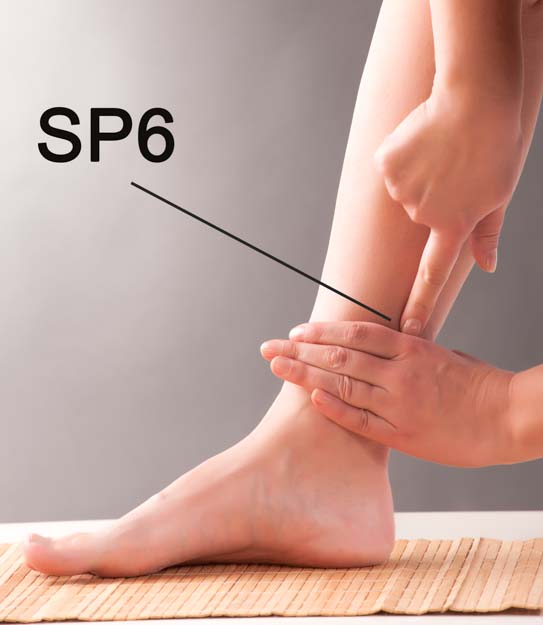Independent clinical investigations concur that acupuncture and herbs are effective for the treatment of cirrhosis with ascites. One investigation used an integrated treatment protocol consisting of acupuncture, infrared radiation, dietetics, and herbal medicine to achieve positive patient outcomes for patients with end-stage cirrhosis with ascites. The research indicates that integration of Traditional Chinese Medicine (TCM) protocols into the hospital setting benefits end-stage cirrhosis patients.
Acupuncture and herbal medicine are effective for the treatment of end-stage liver cirrhosis and ascites. Researchers from Nanyang City First People's Hospital (Henan Province, China) tested a TCM protocol using acupuncture, far infrared, herbal intravenous injections, herbal soba noodle soup, and an oral herbal decoction. The combination therapy effectively reduced or eliminated ascites, improved urine volume and appetite, and normalized liver and kidney function.

A total of 95% of patients in the clinical trial achieved optimal positive patient outcomes meeting the following parameters: ascites completely resolved, normal appetite, normal urine color and volume, normal liver and kidney function. The remaining 5% demonstrated: significant reductions in ascites, appetite improvements, reductions of nausea and vomiting, improved urine volume and color, improvements in liver and kidney function. The researchers note that the TCM protocol reduced liver fibrosis and glomerulosclerosis while simultaneously promoting the regeneration of liver cells.
The acupuncture and herbal treatment protocol is as follows. Acupuncture was applied to the following acupoints:
Yinlingquan, SP9 (Yin Mound Spring)
Sanyinjiao, SP6 (Three Yin Intersection)
Taixi, KD3 (Supreme Stream)
Taichong, LV3 (Great Rushing)
Guanyuan, CV4 (Gate of Origin)
A TDP heat lamp (far infrared) was focused on the CV4 acupoint and deqi was stimulated with a manual tonification technique. For the remaining acupuncture points, mild reinforcing and reducing manual acupuncture techniques were applied. Acupuncture was applied once per day, needles were manually stimulated every ten minutes, and total needle retention time was thirty minutes per acupuncture session.
A specialized Hong Hua (safflower) preparation was made for the purposes of intravenous fluid injection. The IV consisted of 40 ml of Hong Hua extract and 250 ml of 5% glucose. The IV was administered to patients once per day. Total treatment time for acupuncture and the Hong Hua IV injection was one month.
An herbal decoction was administered once per day for a total of one month. The herbal soba noodle soup was administered once per day for a total of three days. The decoction was prepared from herbs including:
Qing Hao (wormwood) Herba Artemisiae Apiaceae
Tong Cao (rice paper pith, tetrapanax) Medulla tetrapanacis Papyriferi
Dan Shen (salvia root) Radix salviae Miltiorrhizae
Wang Bu Liu Xing (vaccaria seeds) Semen vaccariae Segetalis
Hou Po (magnolia bark) Cortex magnoliae Officinalis
Si Gua Luo (loofah, luffa)
Sheng Di Huang (Chinese Foxglove Root) Radix rehmanniae Glutinosae
Shi Hu (dendrobium stem) Herba Dendrobii
Che Qian Zi (plantain seed) Semen plantaginis
Dang Gui (Chinese angelica root) Radix angelicae Sinensis
Bai Zhu (white atractylodes rhizome) Rhizoma Atractylodis Macrocephalae
Yu Jin (turmeric tuber) Tuber Curcumae
Da Fu Pi (betel husk) Pericarpium arecae Catechu
Lian Qiao (forsythia fruit) Fructus forsythiae Suspensae
Di Long (earthworm) Lumbricus
Chen Xiang (Chinese eaglewood) Lignum Aquilariae Resinatum
The herbal soba noodle soup consisted of equal portions of the following herbs that were baked and ground into a powder. For each serving, 10 g of herbal powder was mixed with 60 g of soba noodle flour to produce the noodles. The noodles were boiled in water and patients consumed both the water and noodles, once per day, for a total of three days. The herbs for the noodle recipe were
Gan Sui (Kansui Root) Radix Euphorbiae Kansui
Hong Da Ji (Euphorbia) Radix Euphorbiae seu Knoxiae
Yuan Hua (Genkwa Flower), Flos Daphnis Genkwae
Qian Niu Zi (Morning Glory Seeds) Semen Pharbiditis
The research was conducted at Nanyang City First People's Hospital. The results indicate that the acupuncture plus herbal medicine protocol is an effective treatment for end-stage liver cirrhosis with ascites. The results were published in the Zhejiang Journal of Traditional Chinese Medicine. Kang et al. had similar findings concluding that acupuncture and herbs are effective for the treatment of liver cirrhosis and hepatosplenomegaly. In addition, Du et al. conducted independent research and concluded that acupuncture with moxibustion is effective for the treatment of cirrhosis with ascites.
References:
Chen GX. (2010). Acupuncture combined with medication in treating end-stage liver cirrhosis (with ascites) of liver & spleen blood stasis, 43 cases. Zhejiang Journal of Traditional Chinese Medicine. 45 (7).
Kang K & Chai CN.. (2011). Traditional Chinese medicine and acupuncture on Gan Da Xin acupoint in treating liver Cirrhosis and hepatosplenomegaly. Medical Innovation of China. 8 (18).
Du XD. (2015). Clinical Observation of 135 Cases of Cirrhosis Ascites Treated with Acupuncture and Medicine. Medical Information. 28 (34).

![Diseases, Symptoms, tcm, [tcmwindow.com]](/uploadFile/adImg/2015/11/11/f5cbfcc0-4df5-4646-9b9a-f316651a0199.jpg)





